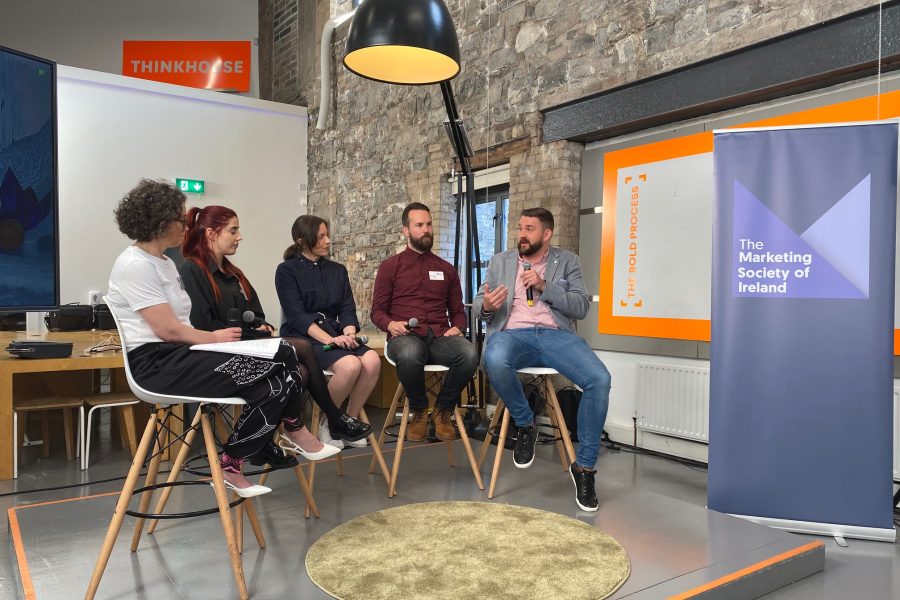On a recent trip to Amsterdam with my son, our most important mission was not to see the Night watchman in the Reich or amble through the Jewish quarter where Anne Frank wrote her diaries, but source as many different varieties of Tony’s chocolonely we could get our hands on!
It made me think – why do challenger brands have the ability to build so much affinity and such deep loyalty. What is it that gives this brand stand out in a cluttered and noisy category?
What makes a brand a challenger brand?
Challenger brands shake things up. They change the rules. They get famous. And they do it with passion and smarts, not big budgets or easy answers. It’s why they’re some of the fastest growing companies on earth.
But what makes a challenger brand a challenger?
According to Adam Morgan, author of Eat the Big Fish and expert in all things challenger says “…. what makes a challenger is the mindset they bring. In particular it’s about having an ambition that is significantly bigger than your conventional marketing resources, being prepared to do something bold and imaginative to close the gap between these two things”.
So being a challenger is primarily a mindset. It’s not about being number 2, 4 or 6 in the category, its more about how you think about the market and how you want to approach it differently.
And of course, challenger brands challenge something. They challenge something about themselves – in terms of practises, behaviours, self-limiting and constraining mindsets but importantly they challenge something in the world around them.
Indeed, it’s rare that challenger brands are about challenging other brands, it’s much more about challenging something – something in the category that doesn’t belong there anymore. Something about the user experience that feels clunky and over complicated. Something about the way society works or talks that is out of step with progress. In short challenger brands redefine convention by putting it up to the status quo and say enough!
What does the future hold for challenger brands? One thing we’ve become able to rely on is uncertainty. That’s a given. But the flip side of the uncertainty coin, comes opportunity. In the past 12 months we’ve seen a shift in gear to a greener economy, rise of the metaverse, the growth in NFT’s, the continuing popularity of gaming, and E Sports. So, what are the challenger brands to look out for in the year ahead. Too many to include in this blog and for the full report click here, Challengers to Watch out for 2023 but here are my top 3 favourites:
- Modern Animal: Is everyone as pet mad as my kids? Sometimes I do wonder am I running a mini urban zoo! Truth be told- I’m not alone! In fact, the global market for pet care is predicted to reach $241.1bn by 2026 with 70% of US households now owning a pet. Modern Animal was launched in the midst of the pandemic. It’s one of these new breeds of next- generation challengers bringing a tech, design and people -first approach to the world of veterinary services. It’s a subscription service which offers 24/7 telemedicine consultations as well as consultations in person. This combination of inclusive check-ups and convenient video calls means that in 2021 the average Modern Animal member made five visits to the clinic and around 40 interactions through the app. Even by my pets’ standards that’s a lot more time than I spend with my vet. So, what else do they offer? An easy app booking, a comfortable and soothing waiting room and a cold brew coffee while you wait. It’s the combination of comfortable and design-focused environments with tech-enabled convenience (something we’re also seeing in human healthcare), as consumer and employee expectations rise.
- Thursday – dating app. Last year on a train to London I overheard two girls raving about this app. And why they liked it, was exactly the reason it was designed in the first place. It only works on Thursday – which means people don’t have to waste their precious weekend on dude dates. Founders Matthew Mc Neill Love and George Rawlings realised most of their single friends were disillusioned with the copious amounts of time wasted on dating apps. Thursday was borne out of this frustration. It’s a gamified way of arranging a date. Users can only match message and meet their potential dates, reinforced by a countdown looming before their potential perfect match disappears forever. It’s an approach that keeps users on their toes and encourages them to get out there and meet people, leaning in to a Fxxt it, why not mindset. This app has big ambitions and hopes to continue to push the category forward and move into the big league by challenging market stalwarts -Hinge, Bumble and Tinder.
- Reflaunt – taking circular fashion main stream. Tweaking the existing hyper consumption model which is contributing to catastrophic climate change, feels a very inadequate response to what experts insist requires a fundamental transformation, in the global economy is needed to stave off climate change. Fashion and textiles is the second biggest polluting industry contributing to 10% global carbon emissions. Reflaunt is a b2b software platform connecting fashion brands and retailers with the second-hand market. Its mission it to transition the fashion industry away from destructive linear model of make, use, waste to a sustainable and circular model of consumption. Reflaunt’s technology enables consumers to sell unwanted items back to the brand they purchased them from through its in-house platform. For instance, a consumer purchasing a designer bag could sell it back to the brand via the same online store. Reflaunt’s technology, which is based upon the Blockchain, authenticates the item through a unique digital ID, and it’s then sold on via 3rd party marketplaces to find a new owner and enjoy a new life. The seller then receives cash for the resale while the brand and marketplace get their cut too. In August, Reflaunt announced a partnership with high-end department store Harvey Nichols, where customers could earn up to 80% back of the original retail price when they sold luxury fashion items back to the store via the service.
The list of challenger brands is impressive. What’s clear is that understanding the central challenge gives each of these challenger’s real strategic clarity – clarity on their positioning, on their culture, and on their communications behaviour.
Some myths about challenger brands
There are lots of myths about challenger brands that are both untrue and at times unhelpful:
- Being a challenger brand is more default than design. Not true.
Challenger brands are not for the faint hearted. And while they are hugely exciting places to work and exciting places to be part of, they require a lot of emotional energy and mental smarts. These brands aren’t afraid to dial up the dramatic, do things that get them noticed, be brave, provocative and relentlessly committed to their end goal. These are cultures and organisations built on action and not pure words.
- Being a challenger is the preserve of start-ups – again not true. Some long-established companies over 100 years old have adopted a challenger mindset and culture and reaped the rewards.
- Challenger brands outgrow their challenger origins. Again, I disagree. Look at Richard Branson and Virgin and its continuous ability to deliver on its core brand purpose of “changing the game for good” that keeps them relevant, zeitgeisty, and disruptive in categories where the status quo has often constrained progress.
In reality any brand can be a challenger brand. It’s not the preserve of new brands on the block or start- ups. Well established brands can and do often reignite their inner challenger. It takes the right mindset, ambition bigger than a company’s marketing budget and a purpose and a commitment to progress that supersedes the singular pursuit of profit.
If you can tick those boxes, you’re well on your way!


